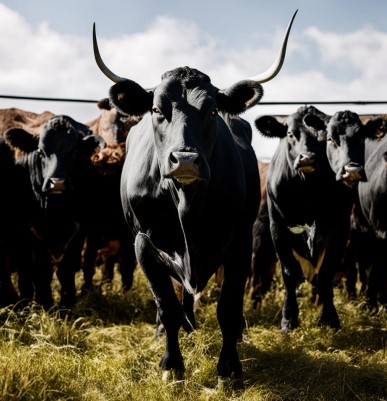African swine fever: from fatal infection to chronic disease

Globalization, the flow of goods, capital and people across geographic boundaries, contributes not only to human development, but also to the rapid spread of infectious diseases throughout the world. Increased interaction between countries, efficient and inexpensive transport, and trade in agricultural products have led to the spread of diseases unusual for the region. Early diseases that spread from Asia to Europe were the bubonic plague and influenza of various types; at the present stage, this is, of course, a pandemic of a new CORONAVIRUS infection. Globalization has not spared agricultural diseases either. animals.
African swine fever ( ASF ) today is one of the most dangerous diseases and key risks for livestock production both in our country and throughout the world, as it causes high mortality among pigs, socio-economic consequences and has a tendency to rapid and unexpected interstate spread.
The virus has a large, double-stranded DNA genome, making it the only DNA virus in a group of viruses transmitted by tick bites. This singular virus represents a separate family Asfarviridae (African swine fever and related viruses) and the genus Asfivirus. The ASF virus manifests itself only in domestic pigs and wild boars, and is accompanied by fever and extensive hemorrhages in the internal organs of the animal, and an increase in body temperature. Infected animals show signs of pneumonia and pulmonary edema, and damage to the NERVOUS SYSTEM develops - convulsions, paresis and paralysis of the limbs. The acute course of the disease lasts 4-10 days, after which death occurs. Mortality in susceptible livestock can reach 100%. With a less acute course of the disease, some animals survive, but they remain virus carriers.
The virus poses no threat to humans. ASF primarily carries economic risks when all animals in the administrative territory where the infection is discovered are destroyed, no matter if they were in contact with infected people or not. For example, when eliminating an infection through the total depopulation of pigs on the island. Malta losses amounted to $29.5 million (1978), in the Dominican Republic - $60 million (1978-79).
Economic risks include not only direct losses when animals are destroyed during the radical eradication of a disease. In the event of a large-scale outbreak of the disease, a quarantine may be imposed on the EXPORT of feed grains and food products, and the movement of tourists may be limited, since any traveler in this situation can become a carrier of the infection. Restrictions may be introduced for several years. The ASF epidemic in Brazil, which began in 1978, had similar multifactorial consequences. The governmentThis country has previously taken special measures to expand pig farming for the production of edible protein, promising significant economic benefits for the population, especially increased employment for a significant number of small owners in agricultural areas. The spread of ASF in Brazil was accompanied by measures taken to reduce pork consumption in the domestic market by 40% and a cessation of its exports, as well as an embargo by some countries on other livestock and even crop products, in particular soybeans and bananas. The damage from the measures taken amounted to $27.6 million.
ASF was first described at the beginning of the twentieth century in East Africa, where domestic pigs were imported from European countries. The researchers noted that outbreaks were more common in domestic pigs that had contact with wild African pigs. In wild African pigs the disease is asymptomatic. Thus, African wild pigs are the natural reservoir of the virus.
The disease first began to spread around the world in 1957, when it spread beyond the African continent: from Angola the disease was brought to Portugal, and in 1960 to Spain. Subsequently, the infection spread to other European countries - France, Italy, Belgium and the Netherlands. Then the first attempts to create a vaccine against African swine fever appeared. However, when pigs were vaccinated in Spain and Portugal with a weakened strain of the virus, the strain regained its properties and began to infect pigs. The result was the circulation of two strains - field and vaccine. In 1977, scraps from a cargo ship that arrived from Brazil at the port of Odessa led to an ASF outbreak in the USSR. The Soviet vaccine prototype also failed. The vaccine caused extreme pressure on the pigs' immune system. As a result of vaccination, animals died not from ASF, but from other infections that were fatal for vaccinated pigs. Nevertheless, in the Soviet Union the disease was dealt with quickly, helped by the rigid centralized structure of government.
After 30 years, ASF returned to RUSSIA - this time by land from the vicinity of the Georgian port of Poti. In Russia, from 2007 to 2023, 2252 cases of ASF were recorded, and geographically the disease is recorded in various parts of our country. In general, the situation with ASF in the country can be called consistently tense, which requires constant monitoring of the situation.
Today, there is a widespread opinion among experts that the only way to win the fight against ASF is the invention of a vaccine that can stop outbreaks of the disease. In their opinion, if an animal is vaccinated, then this is a guarantee that it does not need to be slaughtered.
Currently, several large scientific centers in the world are developing vaccines against ASF: Russia , Germany , Spain, the usa andCHINA . The interest of manufacturers in creating a vaccine is understandable: there are hundreds of millions of pigs in the world, i.e. this is a huge market for a new vaccine. It should be noted that many manufacturers are reporting successful vaccine trials, but there is no talk of victory over ASF yet.
The fight against ASF is complicated by the fact that the disease can occur in two forms - asymptomatic, when the pathogen remains in the body for a long time, as in wild pigs in natural foci, and acute fatal with 100% mortality. The entire range of forms of manifestation of the disease - from acute lethal to asymptomatic - indicates the presence of a number of genetic variants of the ASF pathogen. This is evidenced by the spread of infection in Haiti in 1978: mortality from 80-100% at the beginning of the disease dropped to 3-10% within a few weeks. This rapid change in the virulence of the ASF virus clearly shows that the cause of this phenomenon is not a mutation of the virus or natural selection.
Natural selection, which consists of emergency measures to combat the infection, namely the destruction of all animals in the administrative territory in which an infection with obvious clinical manifestations was discovered, allowed the formation of strains that cause the latent course of the disease.
This is evidenced by the common property of all recent isolates (the “European” group) to cause not 100% mortality, but a subacute, chronic course of ASF. The spread of a latent form of the disease may be the reason for its persistence. In addition, the latent course of ASF is very difficult to determine, and it is possible to calculate the number of infected animals only in a presumptive form: clinical signs not related to ASF (general deterioration of condition, developmental delay) are not taken into account in the diagnosis. It is important to note that it is under these conditions that, under the influence of various factors of natural or “artificial” selection, modification of the ASF virus occurs, creating a diversity of genetic variants of the viral population. Scientists fear that the causative agents of ASF disease in the body of latently sick animals are capable of restoring or enhancing virulence, as well as other properties, as happens in the laboratory during serial passages of the virus in pigs and in cell culture.
Thus, ASF primarily carries economic risks, because, according to existing standards, it is necessary to slaughter all animals within the administrative territory, regardless of whether they were in contact with infected people or not. The presence of a virus is a huge problem for any country, including export.
Until now, an effective vaccine that provides complete protection for pigs against this dangerous disease for pig farming has not been developed, despite statements about this by many manufacturers.
As ASF spread, the disease evolved towards an increase in the number of animals suffering moderately and chronically without pronounced clinical signs. Laboratory conditions confirmed the ability of ASF pathogens to restore or enhance virulence.
Read together with it:
- The IEA sees a risk of a decline in oil production in Russia due to sanctions.The IEA sees a risk of reduced oil production in RUSSIA due to US sanctions , but maintains its production forecast. According to the IEA, Russian oil exports will remain unchanged.There is a "significant downside risk" to Russia's oil production forecast due to US sanctions, the International Energy Agency (IEA) said in a report.BLOOMBERG . The agency's experts believe that the latest US sanction...
- UniCredit заявил о галактических усилиях из-за санкций против РоссииUniCredit старается не нарушить «более 15 тыс. санкций», а также не «совершать ошибки», которые позволят изъять его активы в России, заявил гендиректор. После начала военной операции банк начал рассматривать возможность ухода Итальянский банк UniCredit прилагает «галактические усилия», пытаясь соблюсти международные санкции в отношении своего российского подразделения. Об этом заявил генеральный д...
- "Коллективы АПК способны решать любые задачи даже в непростых условиях". Назаров о заслугах сельхозпроизводителейЮрий Назаров 13 ноября, Минск. Обеспечение продовольственной безопасности страны - большое достижение трудовых коллективов аграриев, отметил управляющий делами Президента Республики Беларусь Юрий Назаров на торжественной церемонии награждения государственными и иными наградами работников АПК Управления делами Президента Республики Беларусь, передает корреспондент БЕЛТА. Торжественная церемония наг...
- He crawled to the icon with prayer. The true story of a man who overcame drug addiction.Alexander Ovchinnikov. Topic News. Our project's hero was a drug addict for many years. The thought that this was a dead end never left him, but his addiction proved stronger. One day, when he could no longer walk, he crawled to an icon in prayer. This became his first step toward a new life. Today, he heads a charity center that helps those who have given up hope and are unable to quit ALCOHOL an...
- Russian agriculture: self-sufficiency continues to growThe industry has a track record of implementing new technologies and increasing productivity. RUSSIA is already confidently self-sufficient in grain, MEAT, fish, vegetable oil, and SUGAR. Grain and vegetable production is also forecast to be higher this year, despite unfavorable weather conditions in some regions. The Ministry expects historic highs for some crops and continues to support agricult...
- Sustainable growth of the food and processing industries in BashkortostanIlshat Fazrakhmanov, Deputy Prime Minister andThe regional Minister of Agriculture noted that the development of these industries provides the population with essential food products and contributes to increased exports. Since 2020, agricultural exports from the region have doubled. Since the beginning of 2......
- Колумбия: При экспорте скота сертификация и прослеживаемость больше не являются необязательнымиВысококачественное животноводство, особенно при экспорте, требует сертификации и прослеживаемости. Это необходимые условия для выхода и конкуренции на многих международных рынках, а также на некоторых всё более требовательных внутренних рынках. Колумбийское животноводство не является исключением из этих правил, и, хотя предстоит ещё многое сделать, всё большее число ферм и компаний внедряют эти ме...




























































